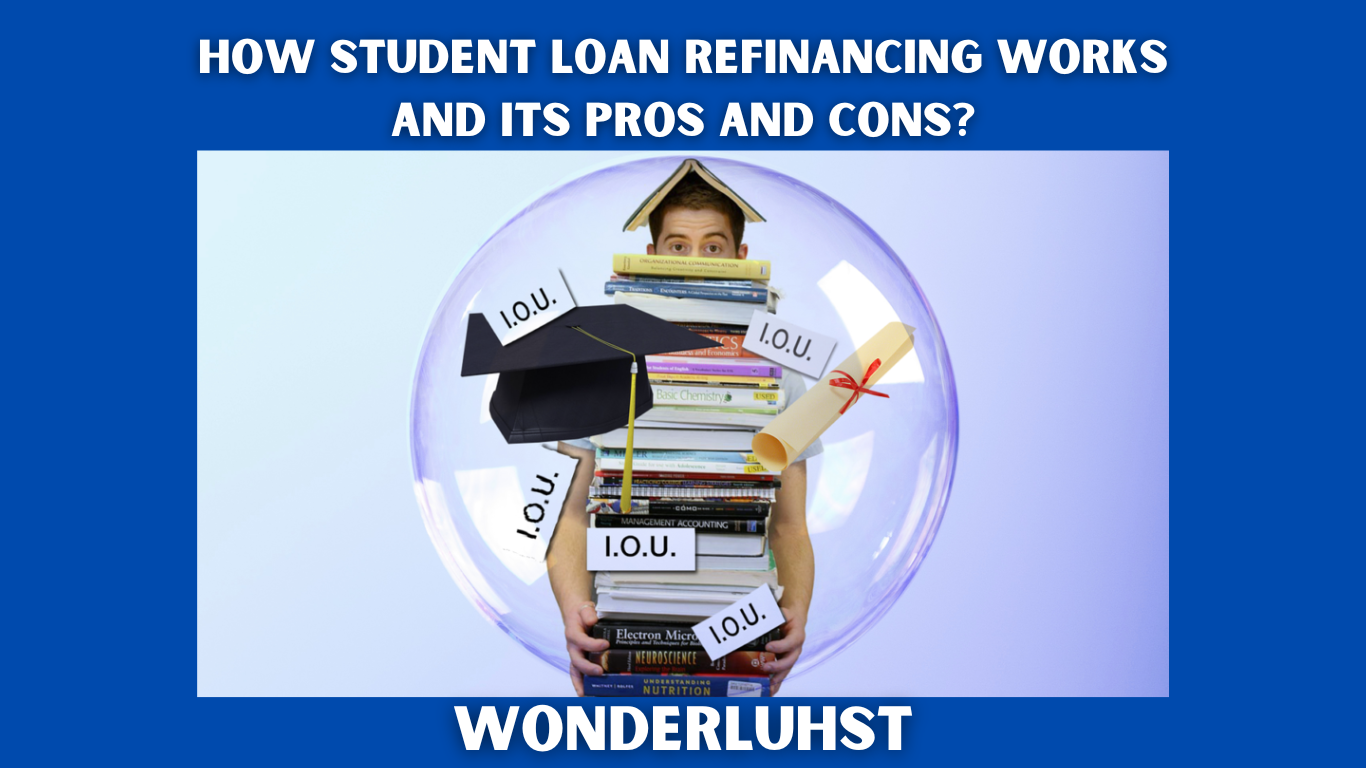How Student Loan Refinancing Works and its Pros and Cons?
The federal student loan moratorium is set to expire on May 1, 2022. After that, the loan must begin to be repaid with interest again. The question on most borrowers’ minds now is, “Should I refinance my federal student loan before the moratorium expires?”
Not surprisingly, refinancing is on everyone’s mind. Interest rates are the lowest in years. Whoever refinances now will be able to secure the lowest rate of interest until the loan is settled. Low interest rates translate into thousands of dollars over the life of the loan.
However, despite the strong appeal of lower rates and big savings, there is a potential downside to refinancing. This is important. What if the current federal benefit is extended again after May 1, 2022? It has been extended 4 times already. Another possible extension. But no one knows for sure and no one can give you a definitive answer.
If affordability is not increased, you will lose the interest savings if you refinance. On the other hand, if it is extended, you will lose the interest relief if you refinance your federal student loans.
It is not easy to refinance federal student loans before the grace period expires or not. This requires careful planning. Understanding how refinancing works and the pros and cons of federal student loan refinancing can help.
How does student loan refinancing work?
Refinancing involves forgoing your existing student loans and getting a new one instead. The new interest rate is based on the current market rate and the applicant’s financial credentials.
Lenders choose to refinance their student loans for a number of different reasons.
The most common reason to refinance is to save money at a lower interest rate. Other reasons include lowering monthly payments to make them more affordable or increasing monthly payments to pay off debt faster.
Under normal circumstances, your decision to refinance student loans will depend entirely on your refinancing goals. However, at this point, you also have to consider your tolerance tolerance. While the loan is in effect, you do not have to make payments. Moreover, interest is also waived so that your loans do not attract interest as well. So the question remains, should you refinance your federal student loans before the grace period ends?
Here’s a look at the pros and cons of this option.
Benefits of refinancing federal student loans before the moratorium ends
Now let’s get to the main reason for refinancing. Interest rates were at historic lows at the end of December 2021. They have grown since then but only marginally and for less than a year.
If you refinance your student loans now, you will get the lowest interest on your loans. A good credit score and stable income will help lower the rate even more. This lower rate will not change over the life of the loan, no matter how much interest rates have increased over the years.
Another important thing to note is that current lower market rates will not apply to your existing loans. Your current loan rates were set when the money was disbursed and remain the same until you settle the loan.
When payments resume on May 1, 2022, you’ll be paying the same interest rate you were paying on the loan before forbearance. The rate will almost certainly be higher than what you will pay on the new loan.
Getting a lower rate on your loans is a good enough reason to refinance. You will save a lot of money in accrued interest over the life of the loan. Even a small price reduction can mean thousands of dollars in savings.
Disadvantages of Refinancing Federal Student Loans Before the Mortgage Ends
Before you rush out to refinance your federal student loans, you should take the time to understand the consequences of this action.
The first drawback is that the federal government does not offer refinancing. If you want to refinance your federal student loans, you must do so through a private lender. As a private loan, it will have none of the protections and benefits associated with a real loan. This means that you will lose access to income-based repayment plans, forbearance options, deferrals, and possible forgiveness if you qualify.
Another drawback is that repayments and interest are due within a month after the completion of the refinancing. You will lose the benefits of rest periods and interest waivers. Therefore, you should proceed with caution if you cannot start paying right away.
One last thought on whether to refinance federal student loans before patience runs out
This is not an easy decision. There is no one-size-fits-all solution. Most financial experts suggest that it is best to wait until payments resume to make a final decision. However, you should not consider refinancing unless you are certain that you will not need federal student loan protection anytime in the near future.
In general, you should only consider federal student loan refinancing if:
You are getting a stable and high income and you are sure that you will not need the protection associated with the original loans.
Have a good credit score and qualify for low interest rates.
You want to increase your monthly payments and pay off the loan earlier.
Do not consider federal student loan refinancing if:
You do not have a stable income or your income is low and you may need federal loan protection to get back on track.
You have bad credit and do not qualify for a low interest rate.
It’s a good idea to consult with a qualified financial advisor before making the big decision to refinance federal student loans before resuming loan repayments.








